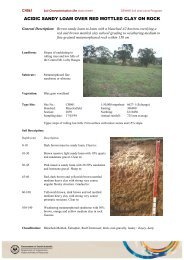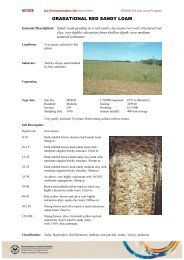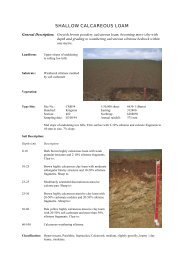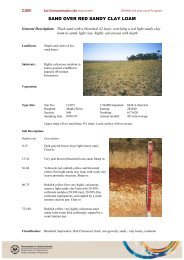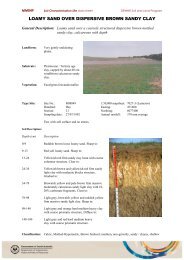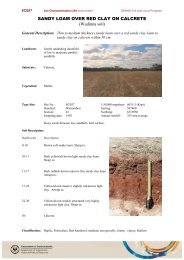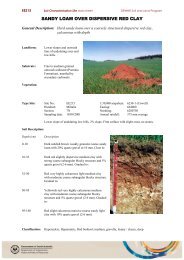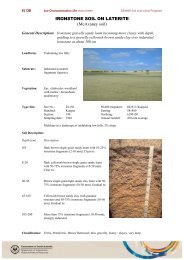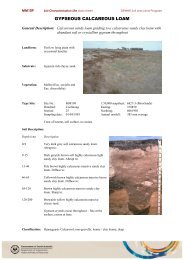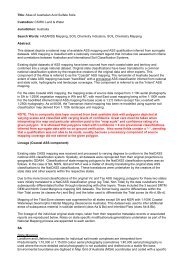You also want an ePaper? Increase the reach of your titles
YUMPU automatically turns print PDFs into web optimized ePapers that Google loves.
estimates of soil erosion by water. Models for predicting the hazard of wind erosion are also available.NLWRA (2001) provides other examples of how broad-scale soil information can be used to predict landcondition and threatening processes (e.g. soil acidification).<strong>ASRIS</strong> also provides a basis for locating monitoring sites for land condition and a framework for theextrapolation of results (Table 1).2.5 Striking a balance between general-purpose and problem-specifiedinformationThere is a long history of land resource survey failing to satisfy the needs of decision makers. It is verydifficult to provide the right soil information at an appropriate scale in a timely manner. Dalal-Clayton andDent (2001) provide a sobering assessment. A difficult challenge here is anticipating the demand for soilinformation well ahead of time. Surveys are rarely commissioned and completed in time to solve aparticular problem, instead, general-purpose surveys are undertaken and a suite of likely problems isanticipated. It is easy to miss collecting key soil properties or to do the survey at an inappropriate scale.Despite these difficulties, our experience has been that a core set of soil properties is needed for mostapplications. These are listed in Table 2.2.6 The task of interpretation<strong>ASRIS</strong> aims to provide access to consistent soil information at the finest resolution available acrossAustralia. It is a source of primary data for natural resource management and research. Wherever possible,these data have been presented in a form that can be readily interpreted; for example, estimates offunctional landscape attributes such as plant available water capacity are given rather than more obscurevariables that may be used to estimate the attribute. Of course, this is far short of the information requiredby many decision makers. For example, the profile available water capacity will only be one of manyvariables needed to estimate the potential productivity of different farming systems. More complexanalyses of environmental risk or optimal mixes of land-use require much higher levels of integration (e.g.incorporating social, economic and political considerations).At this point in time, <strong>ASRIS</strong> does not provide a system for making interpretations of soils and landscapes.However, a logical pathway for development would see the addition of an interface for performing rulebasedanalysis (e.g. land suitability for a range of uses). There is a limit to the level of complexity and it willoften be more logical to download data from <strong>ASRIS</strong> for use within a purpose-built simulation modellingenvironment or decision support system.7




